Bison have just returned to the UK following an absence of thousands of years, thanks to a pioneering scheme to reintroduce these mammals to one of south-east England’s largest areas of ancient woodland. Before the reintroduction in summer 2022, Richard Fleury visited the release site for BBC Wildlife, as preparations were getting underway to find out what it takes to bring back a long-lost giant.
It's a crisp winter morning in Kent. I’m on the trail of a giant that once roamed prehistoric Britain alongside woolly mammoths and sabre-toothed cats. A muddy car park between a caravan dealer and a car body shop seems an unusual place to begin, but waiting for me are Tom Gibbs and Donovan Wright: Britain’s first bison rangers.
Where are bison being reintroduced in the UK?
Tom and Don are based at Wildwood wildlife park, 8km outside Canterbury on the edge of the sprawling Blean Woods, known as ‘the Blean’. Selected from over 1,200 applicants for 2021’s coolest job vacancy, Tom and Don can’t quite believe their luck. “I still have to pinch myself,” says Tom, previously a conservation officer for Herts and Middlesex Wildlife Trust.
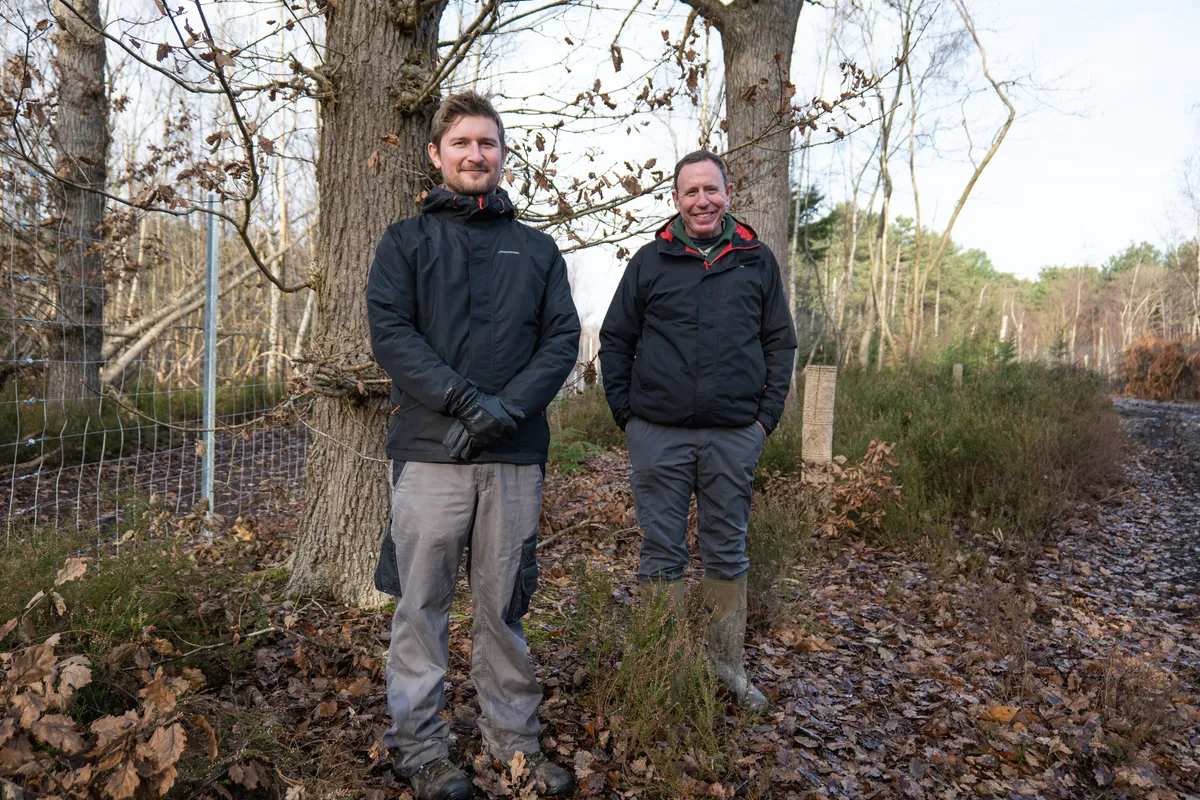
Funded by the People’s Postcode Lottery, the scheme – called Wilder Blean – is a collaboration between the Wildwood Trust and the Kent Wildlife Trust. Don describes the £1,575,000 project as “very special”. As a former safari ranger in southern Africa, he should know.
But why bring bison back to Britain? Two reasons. First, to help secure the species’ future. Wild European bison came within a hair of extinction less than a century ago, saved only by captive breeding and rewilding in Poland, the Netherlands, Romania and elsewhere.
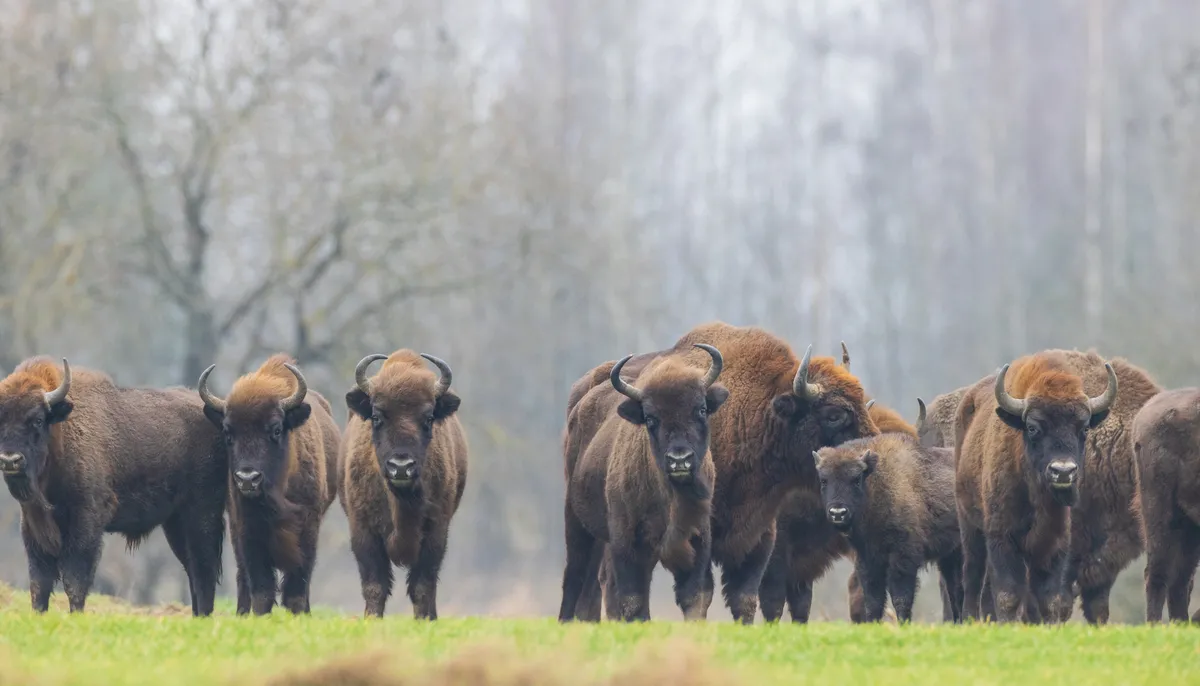
Populations are now recovering, but every one of today’s 7,500 European bison alive is descended from just a dozen zoo-bred individuals. The gene pool has dwindled to a puddle. So establishing new herds reduces inbreeding and improves the species’ resilience. “Because of the genetic bottleneck, we’ve got to be quite careful with them,” says Don. “They were downgraded from Vulnerable to Near Threatened [IUCN Red List status] in 2020, but still need to be protected.”
Second, the project aims to restore a centuries-old wildlife habitat. Many ancient woods were turned over to commercial timber production during the wartime years. Today, like so many Plantations on Ancient Woodland Sites (PAWS), the Blean is covered by tall, light-blocking, non-native conifers.
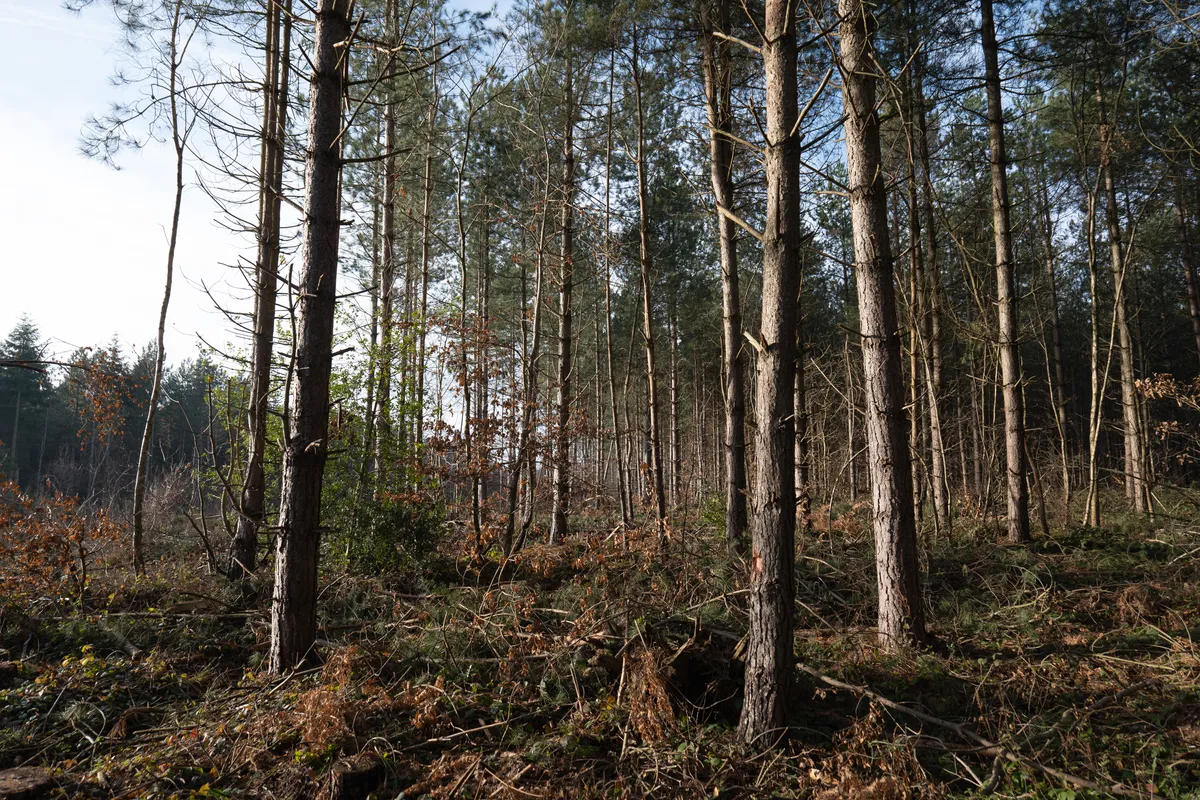
Artificial woodland management and species loss go hand in hand. Britain, with its fragmented habitats, human-made landscapes and intensive agriculture, is one of the most nature-depleted countries in the world, according to the WWF. More than one-in-seven native species face extinction; more than half are in decline.
Why bison are important
The bison is a keystone species, which means an organism that holds an entire habitat together (albeit one that’s been missing for millennia). By simply doing normal bison activities – grazing, foraging, trampling, wallowing, defecating – these mammals naturally maintain woodland in a way that humans with chainsaws and heavy machinery can’t.
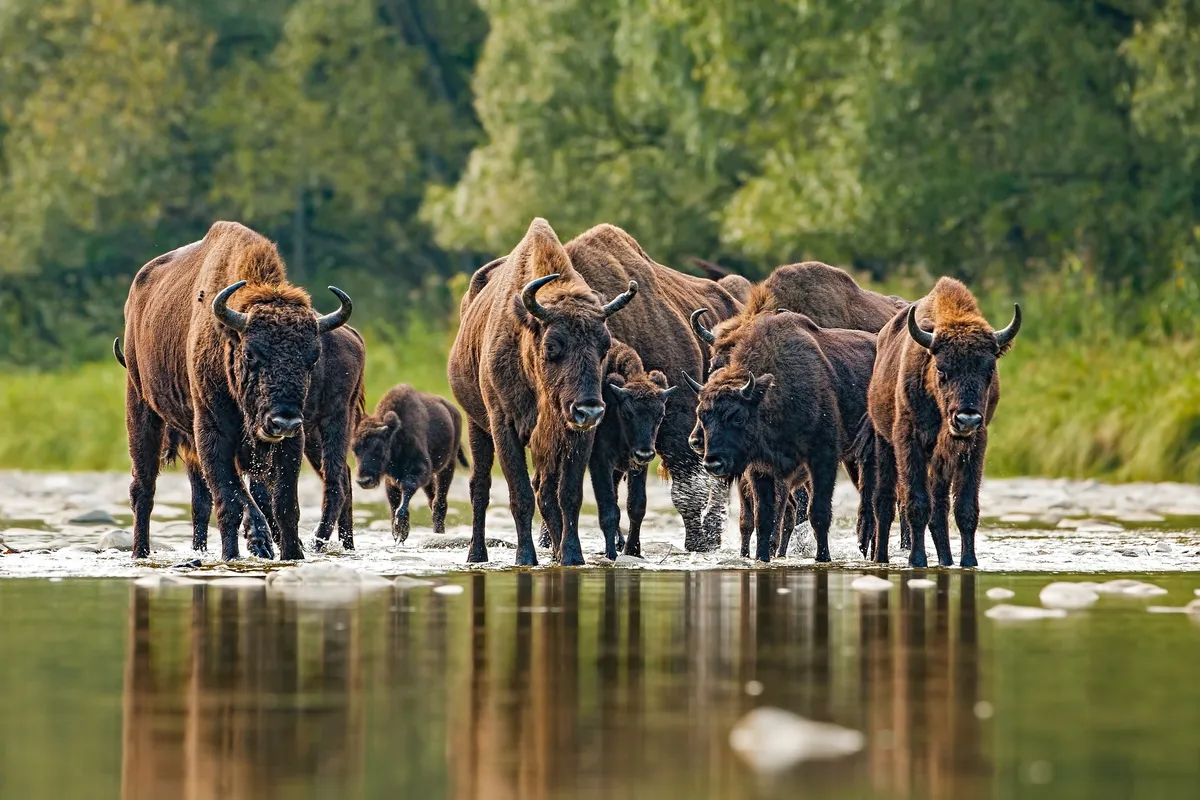
Nature’s woolly bulldozers, bison carve corridors through dense vegetation, killing non-native trees by knocking them down, rubbing against them to scrub off moulting winter fur, or gnawing away bark. “They might ring-bark a tree so it dies off, creating lovely standing dead wood,” says Tom. “Insects will bore into that and you’ll have stag beetles, woodpeckers, bats, mosses, lichens and fungus.”
Bison also dust-bathe to remove parasites, leaving patches of bare earth that are perfect for pioneer plants and lizards, and disperse seeds in their fur and dung. They are the ultimate ecosystem engineers.
“They’re going to be managing the woodland for us,” Tom explains. “And they’re doing it for free!”
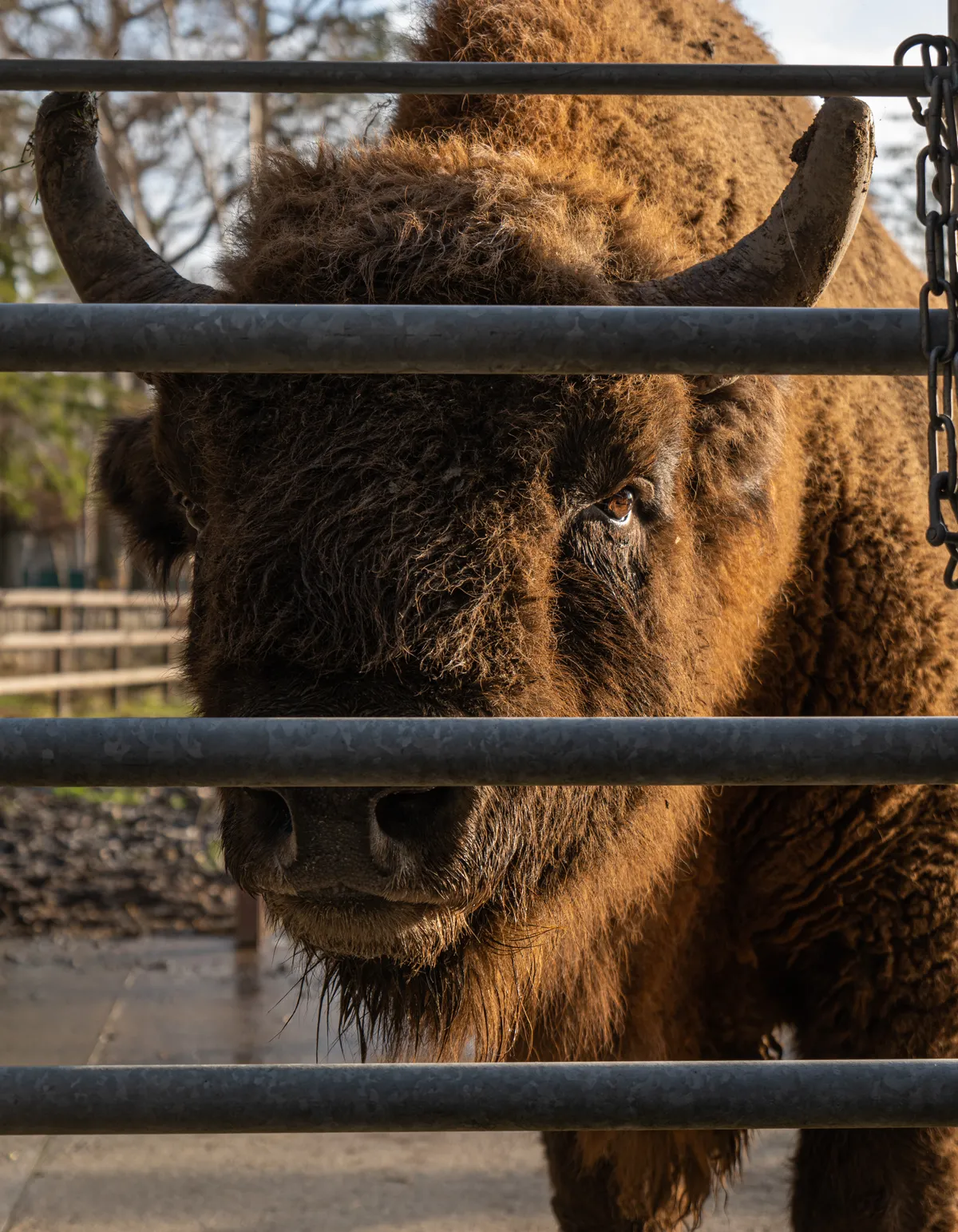
At the edge of the park we come across Wildwood’s current resident bison – a pair of 13-year-old males called Haydes and Orsk. A fully grown bull can weigh a tonne, and up close you get a real sense of their physical power. Sadly, this pair is too tame to join the herd that will soon be living semi-wild just a stone's throw from their enclosure.
Frost has hardened the ground and the only sounds are the crunch of our boots and noise of distant traffic. “You can hear vehicles, but not a single bird,” says Tom. “That’s not normal for a woodland.” But hopefully the newcomers will change that: bird numbers increased annually in the Kraansvlak nature reserve in the Netherlands after bison were introduced in 2007. They were using bison fur to line their nests, researchers discovered.
“We’re hoping that, one day, there’ll be a cacophony of noise in these woods again,” says Tom. All living bison are descended from the steppe bison, which ranged across the mammoth steppe spanning North America, Europe and Asia during the last ice age. They went extinct around 12,000 BCE, but their successor, the European bison, spread east across Europe’s primeval landscapes as far as the Volga River and the Caucasus Mountains.
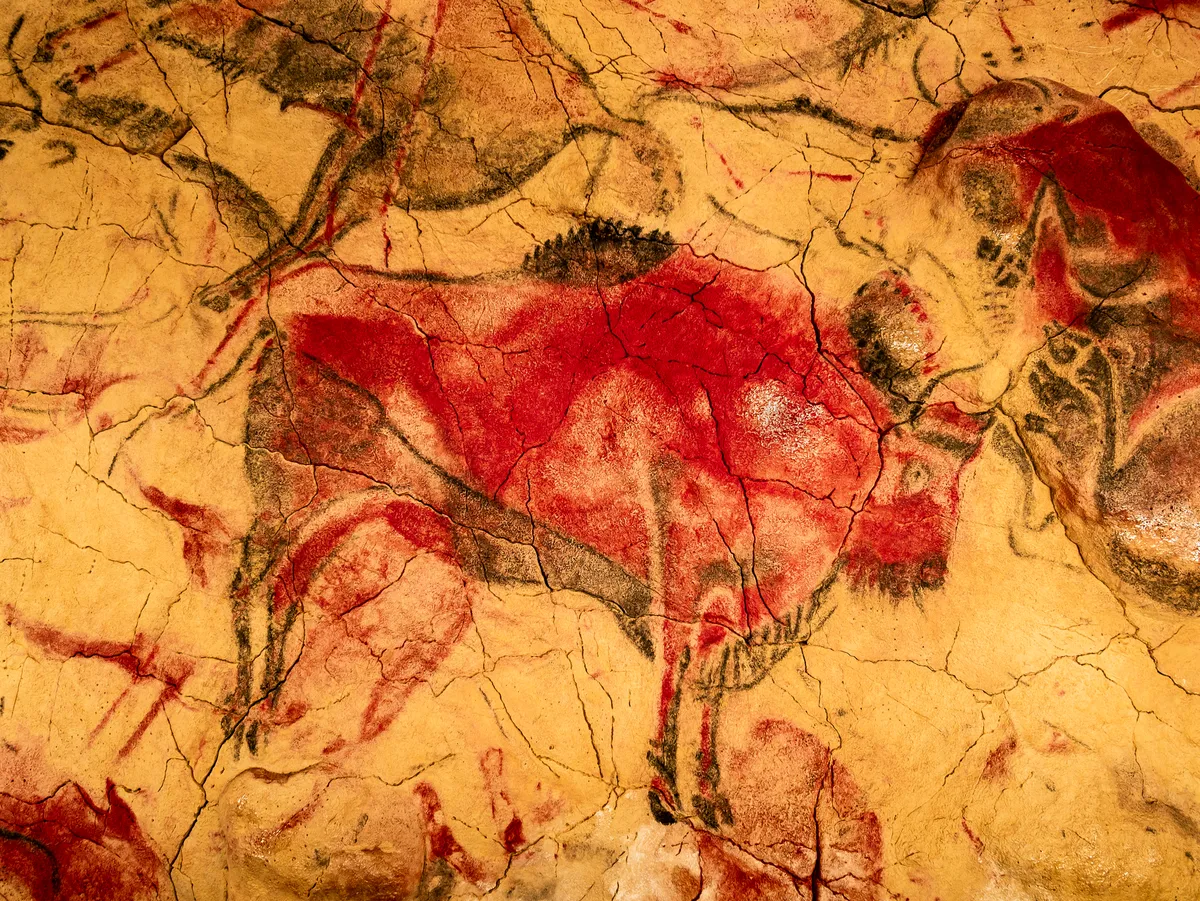
Little has changed and the European bison remains the steppe bison’s closest living relative. Decimated by hunting and forest destruction, it had reached the brink of extinction by the 19th century. The only surviving wild herds were protected as big game animals in Poland’s Białowieża Forest and the Russian Caucasus Mountains, the hunting grounds of kings and czars.
Then, amid the chaos of the World War I, protection of those surviving herds broke down. For hungry soldiers and starving civilians displaced by conflict, the bison was a walking one-tonne steak and so rapidly hunted into oblivion. By the 1920s, both wild populations – the so-called Lowland line and Lowland-Caucasian line – had gone extinct.
“The Blean bison will be the Lowland- Caucasian line, the rarer of the two,” says Don. “Which makes it more special.”
What are the different bison species?
There are two extant (living) species of bison, the European bison (Bison bonasus) and the American bison (Bison bison), and there are There are two recognised subspecies of the American bison (Bison bison bison and B. b. athabascae). There are a number of extinct bison species, including the steppe bison (Bison priscus) and the woodland bison (Bison schoetensacki).
European bison (Bison bonasus)
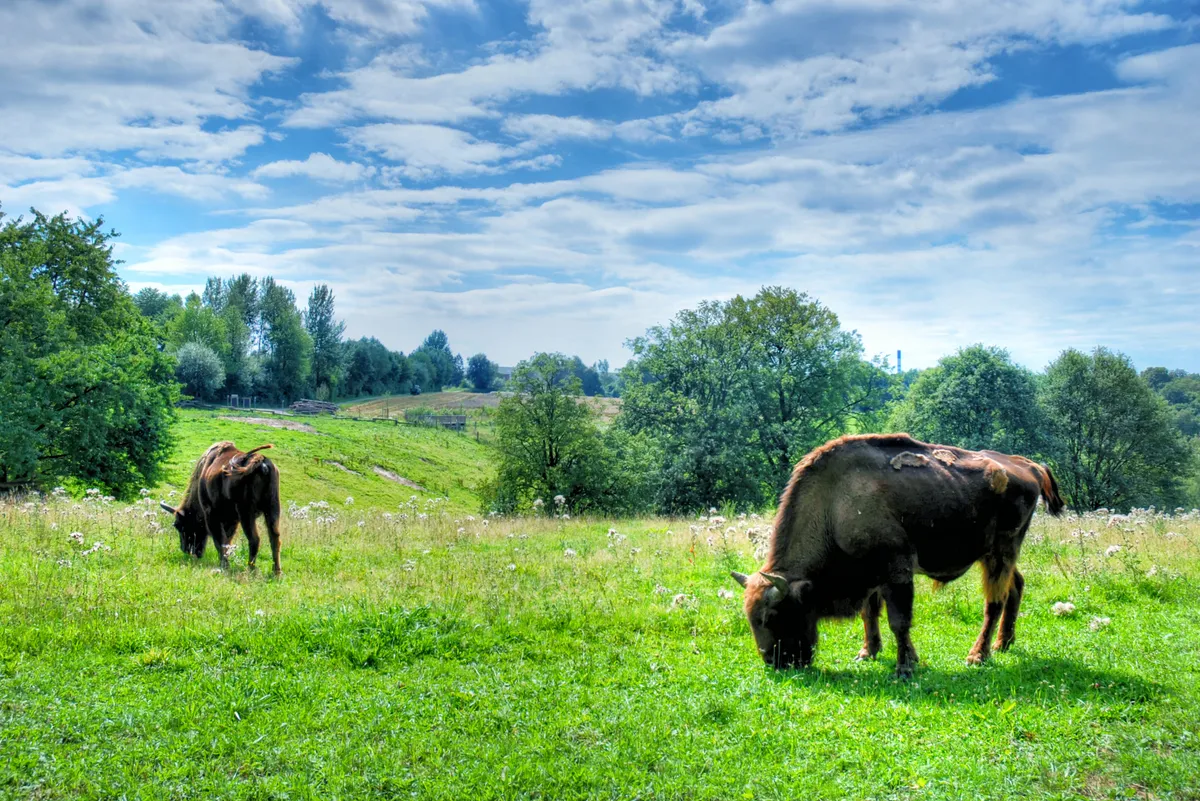
The European bison, or wisent, is adapted to living in woodlands. Slightly taller than the American bison with less dense fur, it browses on leaves, fruit and woody parts of plants.
The European bison is classified as Not Threatened on the IUCN Red List, with increasing population numbers.
The recovery of the European bison is a rewilding success story. In under a century, the population has grown from 54 captive animals to over 7,500, many roaming freely in a wide network of locations. The oldest of these, Poland’s Białowieża Forest (bison were reintroduced here in 1954) is home to the world’s largest wild herd, about 1,000 individuals.
Please note that external videos may contain ads
Bison rewilding schemes are also running in Romania, Bulgaria, Germany, Switzerland, Denmark and the Netherlands. As more is learned about the animals, smaller, less- remote nature reserves are being considered. Despite early concerns, the Netherlands’ first project at Kraansvlak, a 330ha site near Haarlem, is now a blueprint for new projects including Wilder Blean.
American bison (Bison bison)
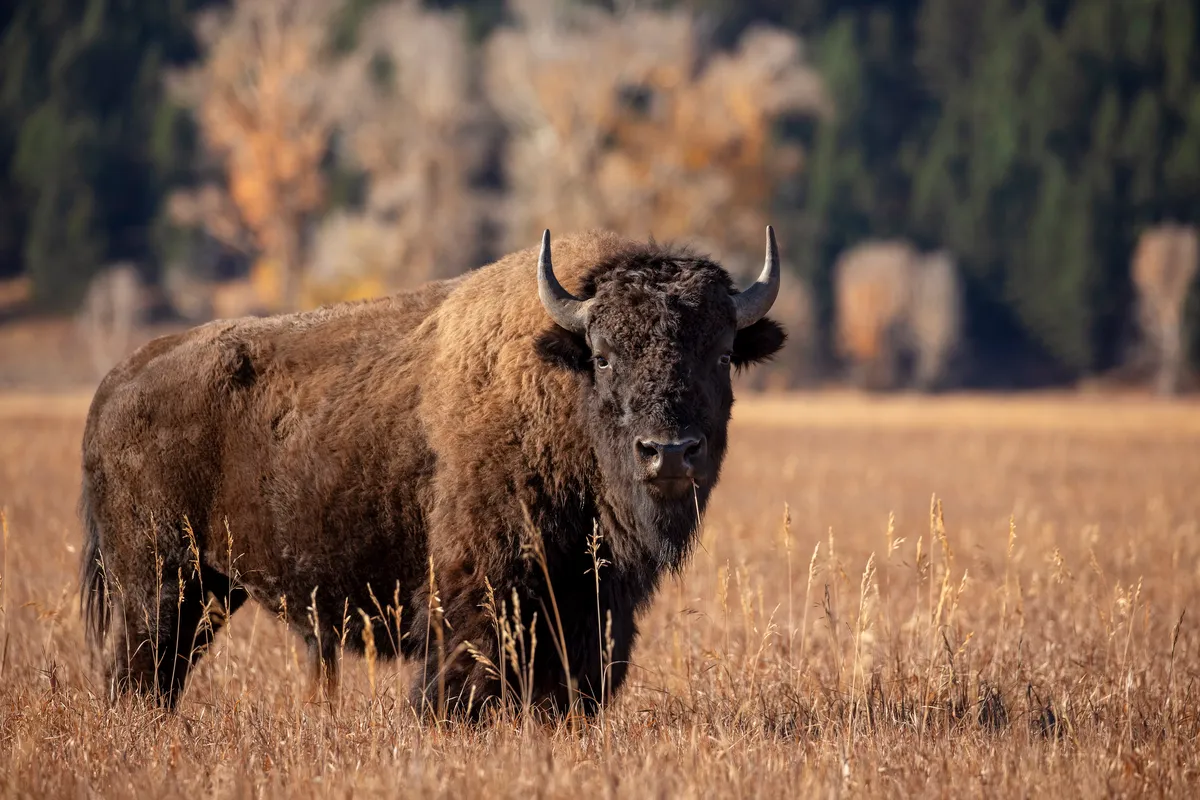
Stockier and shaggier than the European bison, the American bison, or buffalo, grazes on low-lying grass and leafy vegetation. Tens of millions once roamed the plains but the species was hunted to the edge of extinction. Today, the population is recovering thanks to farming and conservation.
The American bison is classified as Not Threatened on the IUCN Red List, with stable population numbers.
Please note that external videos may contain ads
The scientific name of the American bison, Bison bison, is an example of a tautonym, where the genus and species name are the same. The plains bison subspecies (Bison bison bison) is an example of a triple tautonym.
Steppe bison (Bison priscus)
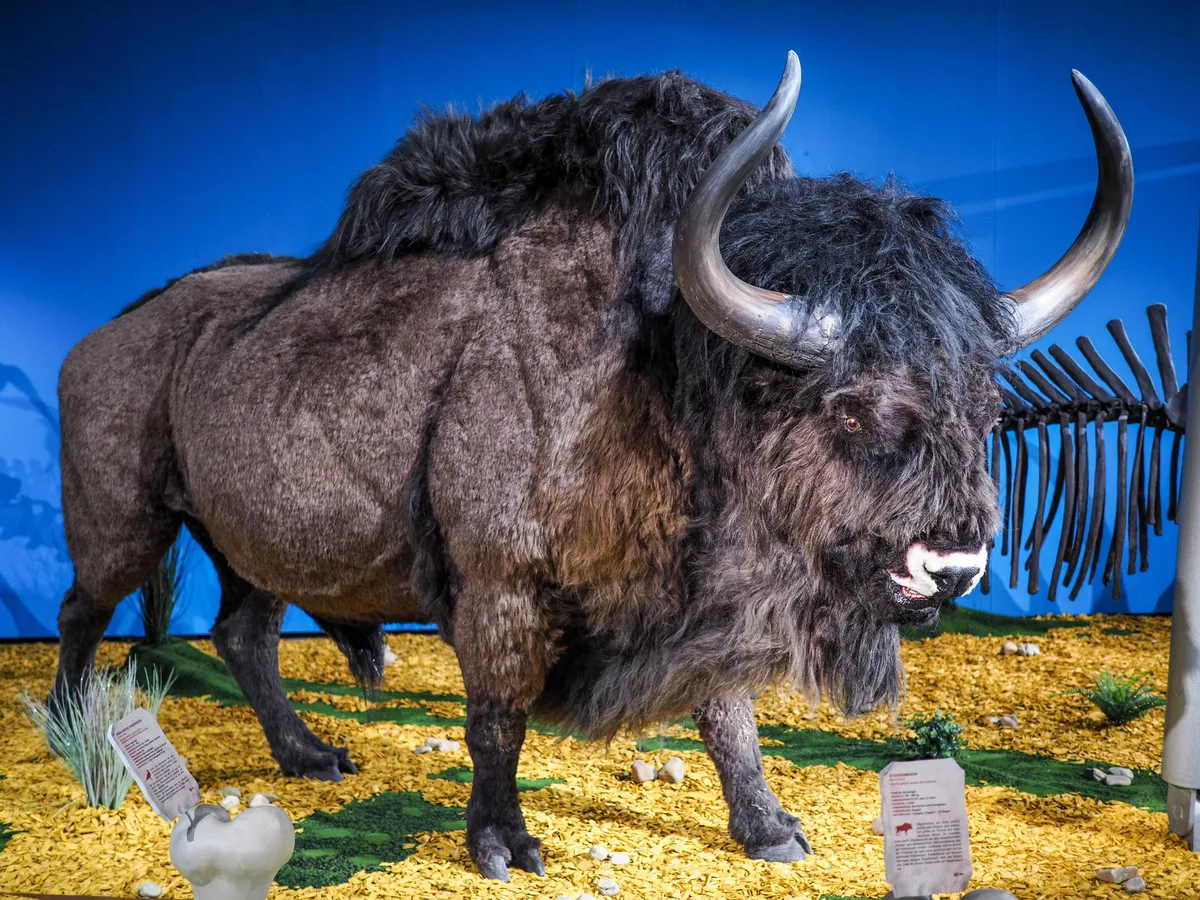
Depicted in cave paintings, the steppe bison had longer horns than today’s bison, and a double hump. It disappeared at the end of the last ice age, about 12,000 years ago.
Woodland bison (Bison schoetensacki)
The woodland bison appeared in the Pleistocene when its range extended from western Europe to southern Siberia. The species existed in Britain and its fossilised bones were found at Cromer in Norfolk.
How many bison are being reintroduced to the UK?
The site is licensed for up to 10 bison to comply with the Dangerous Wild Animals Act 1976, but may support more in future. The herd will begin with just four animals. Like elephants, bison herds are matriarchal. The Blean’s matriarch will be an older female from the Highland Wildlife Park in Scotland and she will be joined by three younger animals: a bull from Germany and two females from Ireland’s Fota Wildlife Park. “We hope to see calves within a couple of years,” says Tom.
There are hopes that the Kent herd may one day help to rewild other sites, both at home and overseas. “If the animals have good genetic lineage, other projects will want them. It’s like an animal bank,” he says.
The bison will roam freely within 210ha of woodland, which are divided into five compartments connected via corridors and, where these cross public rights of way, specially constructed bison tunnels. A nearly 2m-high metal ‘people fence’ will keep inquisitive humans at a comfortable distance. Inside that, an electric bison fence just over 1m high is being installed. Between them, a track wide enough for an off-road buggy will allow rangers to patrol.
Don shows me one of the 20 ponds and watering holes being dug around the site: “There’ll be a viewing platform built here where visitors will have spectacular views of the bison drinking, and a path right around the perimeter where the public will have opportunities to spot them.”
The rangers are taking a cautious approach to more close-up visitor experiences. The public will be able to enter the enclosure, but only on guided walking safaris. (In the Netherlands, within five years of bison being introduced at the Kraansvlak site, people were allowed to stroll through unaccompanied. To date, no dangerous incidents have been recorded.)
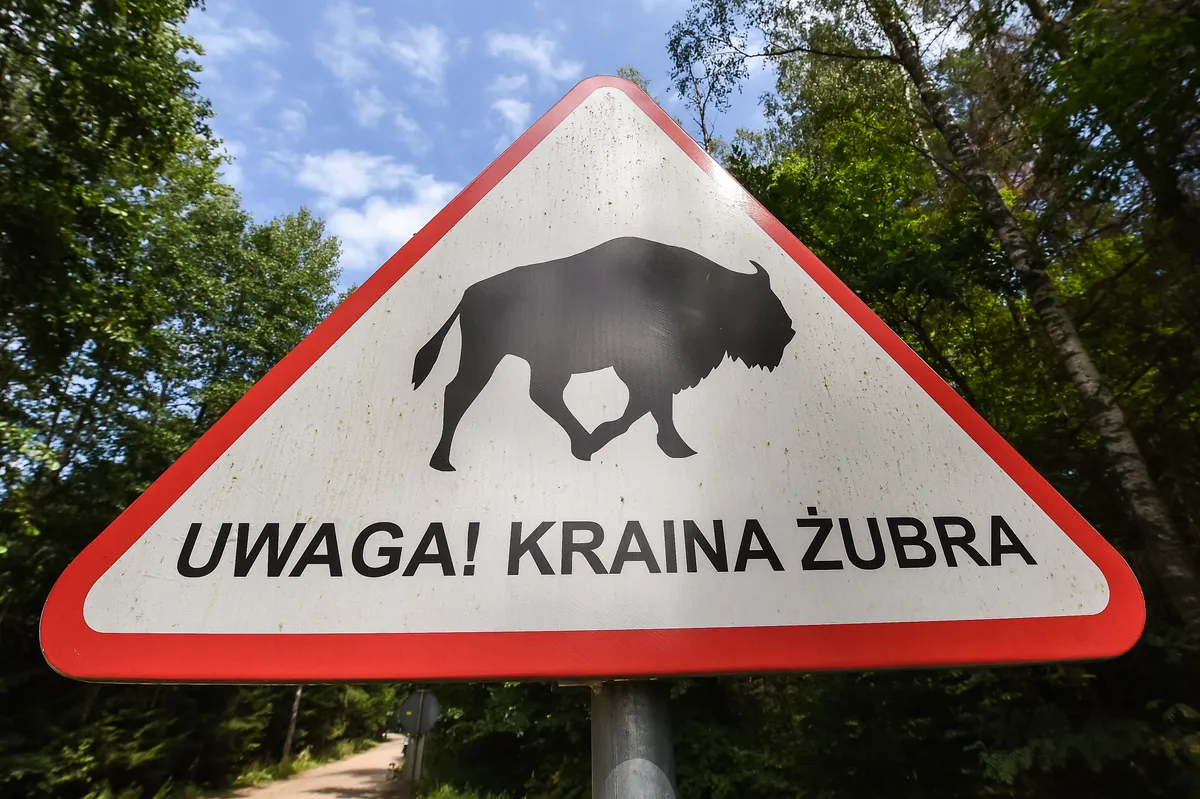
Don and Tom recently spent a fortnight training with Dutch rangers and Kraansvlak’s 14-strong herd, studying the animals’ behaviour in the wild. “We learned so much,” says Tom. “The bison are very intelligent and respectful of physical boundaries – 50m is the golden distance you maintain from them.” He describes his encounters as humbling: “The animals are aware of you but comfortable with your presence.”
How will the rangers keep track of the reintroduced bison?
Like their Kraansvlak cousins, the Blean bison will wear GPS collars. As these can get damaged or lose signal, old-fashioned tracking skills – following broken twigs, dung, tufts of fur or prints – will be crucial, as Tom explains: “When we first started, we were told: ‘Go into the woods and get lost! You need to know these woods!’”
Fortunately, Don has 20 years’ experience tracking elephants, leopards, rhino, buffalo, cheetah and wild dogs in the vast reserves of southern Africa, learning from native Shangaan experts. “He’s a master, so I’m learning from him too,” says Tom. “I’m like Don’s Padawan!”
Contained in a section of West Blean Wood, the herd will be semi-wild. “They’re not wild in the sense of their cousins in the Carpathian Mountains, which have huge expanses of land to roam.” says Tom. “But we will do everything we can to make it as wild as possible. It’s about taking a step back to allow the animals to exhibit natural behaviours.”
This hands-off approach extends to feeding. A large male can eat up to 60kg of food per day and the herd will be left to forage for themselves. But welfare comes first. “If we saw the animals’ conditions dropping and we were worried, we would step in,” says Tom.
The site is equipped with a purpose- built bison corral imported from Canada. Set in a 4ha ‘soft-release’ area, fenced off to quarantine new arrivals, this steel pen will be used to isolate and immobilise animals for health checks. “We’ll only use this possibly once a year and the process will be as quick and stress-free as possible,” says Tom.
Will other extinct species be reintroduced too?
Back in the Pleistocene, bison shared Britain's forests with other megafauna such as the extinct auroch (the wild ancestor of the domestic cow) and the wild boar.
So modern herbivores will serve as proxies, occupying similar ecological niches. English longhorn cattle and Exmoor ponies will fill the hoofprints of grass-grazers like the auroch, while Iron Age pigs – a Tamworth-boar crossbreed – will do the job of wild boar: “Rootling around, disturbing the soil, exposing seeds and transporting them around in their diet,” says Tom.
Cattle and bison will be kept separate, but both will live alongside pigs and ponies, while a control area will be left untouched. Long term, scientists will be able to monitor invertebrate, bird and mammal populations and use drones to map vegetation across the 560ha Blean site. The team expects to see increased bioabundance and biodiversity as the existing monoculture morphs into a vibrant, interconnected ecosystem.

Native holly, oak and silver birch trees will slowly replace non-native conifers, benefitting birds such as nightingales and turtle doves. And more light reaching the woodland floor will help plants such as cow wheat, vital to the survival of the heath fritillary (pictured above), a beautiful brown-and-orange butterfly so rare it was feared extinct in the 1970s.
Within 30 years this damaged woodland in one of the most built-up corners of Britain could be buzzing with new life, all thanks to the bison and their fellow four-legged eco- engineers. “It’s exciting to see big animals like this again,” says Tom. “We’re realising we can have wild spaces on our doorsteps – and it’s so inspiring.”
Main image: European bison in the snow in Bialowieza Forest, Poland. © Damian Kuzdak/Getty








